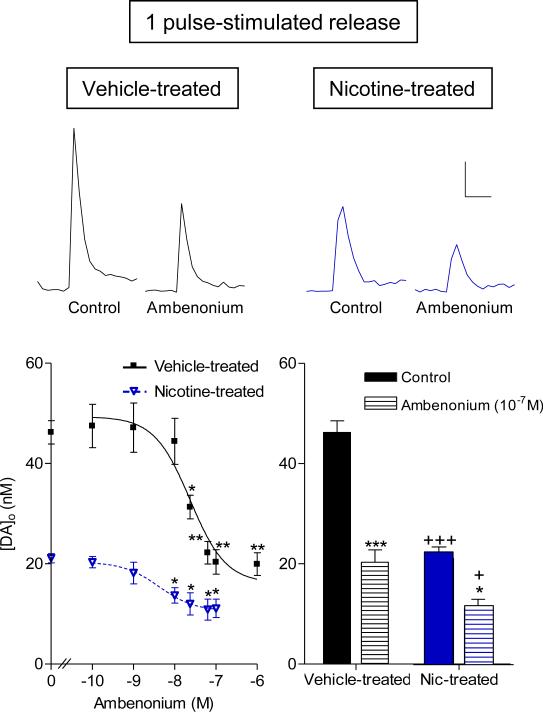Fig. 5.
Decrease in single pulse-stimulated dopamine release in slices of vehicle- and nicotine-treated rats with the acetylcholinesterase inhibitor ambenonium. Dopamine release [DA]o was determined in the absence (control) and presence of ambenonium (0.1-1000 nM). Representative traces show that ambenonium decreases single pulse-stimulated [DA]o in slices from vehicle-and nicotine-treated rats. Scale bar represents 10 nM and 0.5 s. Dose-response curves are shown for vehicle- and nicotine-treated animals (Curve fits were sigmoidal with R = 0.8-0.9). Quantitative analyses show that ambenonium decreases release by approximately 50% at the maximal effective dose in both treatment groups (1000 nM and 100 nM for vehicle- and nicotine-treated respectively). The values represent the mean ± SEM of 3-4 rats. Significance of difference from control (zero ambenonium), ***p < 0.001, **p < 0.01, *p < 0.05. Significance of difference from vehicle-treated rats under each given condition, +++p < 0.001, +p < 0.05.

